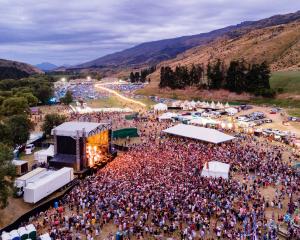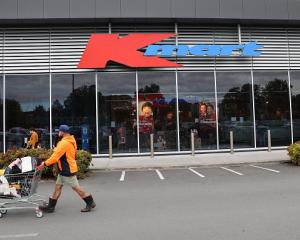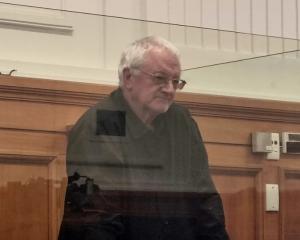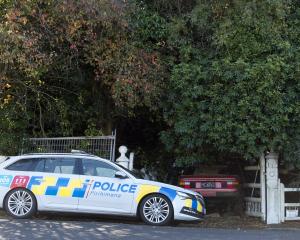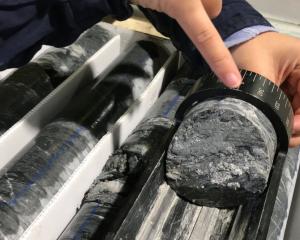SuperBIT’s second test flight from NASA’s Columbia Scientific Balloon Facility, in June 2016. A new telescope that could help yield new insights about dark matter will be launched from New Zealand next year. Video: Royal Astronomical Society
A next-generation telescope that could help yield new insights about mysterious dark matter will be launched from New Zealand and into the edge of space next year.
Next April, the Superpressure Balloon-borne Imaging Telescope, dubbed SuperBIT, will be carried from the ground in Wanaka to 40km above sea level, via a helium balloon packing a volume of 532,000 cubic metres – equivalent to that of a football stadium.
Once operational, the SuperBIT – itself weighing as much as a car - will fly above 99.5% of the atmosphere.
Carried by seasonally stable winds over a few months, it will circumnavigate the Earth several times - imaging the sky all night, then using solar panels to recharge its batteries during the day.

Being positioned above the Earth meant the telescope could capture imagery of space not possible from the ground.
Light from a distant galaxy could travel for billions of years to reach our telescopes, but, in the final fraction of a second, it has to pass through the Earth's swirling, turbulent atmosphere - blurring our view of the universe.
While observatories on the ground were built at high altitude sites to overcome some of this, until now, only placing a telescope in space escaped the effect of the atmosphere.
Over the longer term, the Hubble will not be repaired again when it inevitably fails – leaving NASA and ESA scientists to take imaging only at infrared wavelength or a single optical band levels.
By then, SuperBIT will be the only facility in the world capable of high-resolution multicolour optical and ultraviolet observations.
The project team already has funding to design an upgrade from SuperBIT's 0.5m aperture telescope to 1.5m - the maximum carrying capacity of the balloon is a telescope with a mirror about 2m across.
University of Auckland astronomer Professor Richard Easther said the project came with some clear benefits to science.
"Ultra-violet and infra-red astronomy both work better from high up, so this provides some novel techniques to do that."
And such was the cheap cost of launching these types of telescope, it could ultimately become possible to have a fleet of space telescopes offering time to astronomers around the world.
"New balloon technology makes visiting space cheap, easy, and environmentally friendly," said Mohamed Shaaban, a PhD student at the University of Toronto involved with the project, who outlined the project in a talk last week.
With a budget for construction and operation for the first telescope of NZ$7.1 million, the SuperBIT cost almost 1000 times less than a similar satellite.
Not only were balloons cheaper than rocket fuel, but the ability to return the payload to Earth and relaunch it meant that its design had been tweaked and improved over several test flights.
By contrast, satellites had to work the first time, so typically came with extremely expensive redundancy, along with decade-old technology that had to be space-qualified by the previous mission.
Modern digital cameras also improved every year - so the development team bought the cutting-edge camera for SuperBIT's latest test flight a few weeks before launch.
This space telescope would continue to be upgradable, or have new instruments on every future flight.
NASA has successfully launched a super pressure balloon from Wanaka Airport four times, including in 2017.
Its final test flight in 2019, SuperBIT demonstrated extraordinary pointing stability, with variation of less than one 36,000th of a degree for more than an hour.
Such a feat hadn't been achieved before, partly because balloons could stay aloft for only a few nights – yet Nasa's recently-developed "superpressure" balloons were able to contain helium for months.
"SuperBIT can be continually reconfigured and upgraded," Shaaban said.
"But its first mission will watch the largest particle accelerators in the universe: collisions between clusters of galaxies."
Specifically, scientists wanted to measure the properties of dark matter particles.
Although dark matter was invisible, astronomers map the way it bends rays of light, a technique known as gravitational lensing.
In its 2022 mission, SuperBIT would test whether dark matter slowed down during collisions.
No particle colliders on Earth could accelerate dark matter, but this was a key signature predicted by theories that might explain recent observations of weirdly behaving muons.
"Cavemen could smash rocks together, to see what they're made of," added Professor Richard Massey of UK's Durham University.
"SuperBIT is looking for the crunch of dark matter. It's the same experiment, you just need a space telescope to see it."
Nasa has a long-running partnership with Wanaka Airport, which, in 2015 became the site of New Zealand's first scientific space balloon launch.
According to Nasa experts, Wanaka is the perfect location for these balloon launches for several reasons: its latitude, calm conditions and dispersed population around the airport, particularly in the east where the balloon is likely to drift.
- By Jamie Morton





